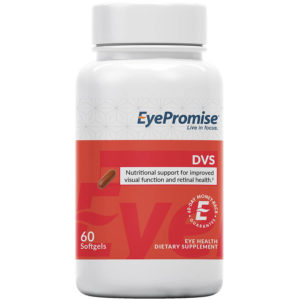Prediabetes: What Does This Mean for ODs?
Posted by amess on Jun 27th 2019
As one of the leading causes of death in the US, diabetes is a terrifying subject. It’s a life-long health issue that requires a multitude of health care professionals to be involved, including eye care professionals. Ideally, we would keep everyone from developing diabetes, but identifying it early and intervening is key in warding off any ill effects.

 Losing weight and exercising are two simple ways to begin reducing the chances of developing diabetes. For patients, that’s as simple as adding a brisk 30-minute walk to the workweek. A program offered by the National Diabetes Prevention Program helps patients ingrain these changes into their lives and reduce the risk of developing diabetes by 58%.
Losing weight and exercising are two simple ways to begin reducing the chances of developing diabetes. For patients, that’s as simple as adding a brisk 30-minute walk to the workweek. A program offered by the National Diabetes Prevention Program helps patients ingrain these changes into their lives and reduce the risk of developing diabetes by 58%.
 EyePromise designed DVS to protect patients’ eyes from the effects of high blood glucose. Tested in a 6-month, human clinical trial, it’s been shown to interfere with all the pathways that can damage the eyes due to increased blood glucose levels. Because of the powerful ingredients and their positive impact on eye health, we recommend prescribing EyePromise DVS to support the eye health of patients with a family history of diabetes and those who have prediabetes and diabetes.*
Learn how to incorporate EyePromise DVS into your practice.
EyePromise designed DVS to protect patients’ eyes from the effects of high blood glucose. Tested in a 6-month, human clinical trial, it’s been shown to interfere with all the pathways that can damage the eyes due to increased blood glucose levels. Because of the powerful ingredients and their positive impact on eye health, we recommend prescribing EyePromise DVS to support the eye health of patients with a family history of diabetes and those who have prediabetes and diabetes.*
Learn how to incorporate EyePromise DVS into your practice.
Prediabetes
The earliest identification is called prediabetes. With prediabetes, blood glucose levels are elevated, but not high enough to be considered full-blown diabetes. Nearly 84 million US adults have prediabetes – that’s 1 in 3! What’s worse: 90% don’t know they have it. The good news is that as soon as patients are aware, they can begin to make lifestyle changes to improve their outcomes.How to Detect Prediabetes
Years can go by with no signs or symptoms arising. The only real way to detect prediabetes is with a blood test. If patients have any risk of prediabetes, encourage them to have their blood glucose tested. Risk factors include:
- Being overweight
- Having a larger waist size (40+ inches for men and 35+ inches for women)
- Being active less than 3 times a week
- Having poor dietary habits
- Being 45+ years old
- Having a family history of diabetes
- Having gestational diabetes at one time or giving birth to a 9+lb baby
- Being any of the following ethnicities
- African American
- Hispanic/Latino American
- American Indian
- Pacific Islander
- Asian American
- Having polycystic ovary syndrome
- Having obstructive sleep apnea or changing/night shifts at work
- Feel hungrier/thirstier than normal
- Lose weight even though they’re eating more
- Use the restroom more often
- Feel more fatigued than normal
Prediabetes → Diabetes
Prediabetes is not the full-blown disease, however, it’s an indication that the development of diabetes has begun. In fact, 7 in 10 patients with prediabetes will develop type 2 diabetes, but certain lifestyle changes help keep prediabetes from becoming worse. Losing weight and exercising are two simple ways to begin reducing the chances of developing diabetes. For patients, that’s as simple as adding a brisk 30-minute walk to the workweek. A program offered by the National Diabetes Prevention Program helps patients ingrain these changes into their lives and reduce the risk of developing diabetes by 58%.
Losing weight and exercising are two simple ways to begin reducing the chances of developing diabetes. For patients, that’s as simple as adding a brisk 30-minute walk to the workweek. A program offered by the National Diabetes Prevention Program helps patients ingrain these changes into their lives and reduce the risk of developing diabetes by 58%.
Damage Done
Though prediabetes is less serious, organs like the kidneys, heart, and eyes may already be incurring damage. High blood glucose, like with prediabetes, is the cause of most health complications and damages the body’s blood vessels well before diabetes can be identified. Once diabetes is diagnosed, it's not if but when patients will develop diabetic retinopathy. Luckily, eye care professionals can offer a proactive way to protect the eyes from damages caused by elevated blood glucose.EyePromise® DVS
 EyePromise designed DVS to protect patients’ eyes from the effects of high blood glucose. Tested in a 6-month, human clinical trial, it’s been shown to interfere with all the pathways that can damage the eyes due to increased blood glucose levels. Because of the powerful ingredients and their positive impact on eye health, we recommend prescribing EyePromise DVS to support the eye health of patients with a family history of diabetes and those who have prediabetes and diabetes.*
Learn how to incorporate EyePromise DVS into your practice.
EyePromise designed DVS to protect patients’ eyes from the effects of high blood glucose. Tested in a 6-month, human clinical trial, it’s been shown to interfere with all the pathways that can damage the eyes due to increased blood glucose levels. Because of the powerful ingredients and their positive impact on eye health, we recommend prescribing EyePromise DVS to support the eye health of patients with a family history of diabetes and those who have prediabetes and diabetes.*
Learn how to incorporate EyePromise DVS into your practice.
Sources
- “Prediabetes - Your Chance to Prevent Type 2 Diabetes | CDC.” Centers for Disease Control and Prevention, U.S. Department of Health & Human Services, 30 May 2019, cdc.gov/diabetes/basics/prediabetes.html.
- “Prediabetes.” Mayo Clinic, Mayo Foundation for Medical Education and Research, 2 Aug. 2017, mayoclinic.org/diseases-conditions/prediabetes/symptoms-causes/syc-20355278.
- Hess-Fischl, Amy. “Prediabetes.” Edited by Lisa M Leontis, EndocrineWeb, Remedy Health Media, LLC, 29 May 2019, endocrineweb.com/conditions/pre-diabetes/pre-diabetes.
- “Diagnosing Diabetes and Learning About Prediabetes.” American Diabetes Association, American Diabetes Association, 21 Nov. 2016, diabetes.org/diabetes-basics/diagnosis/.
